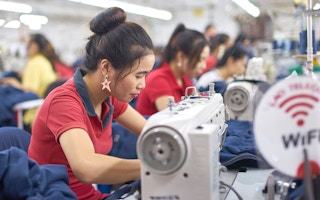Women making clothes for global fashion brands in South Asia are often yelled at by their supervisors and have to take out loans to make ends meet, hundreds of garment workers’ diaries showed.
A year-long study of more than 500 workers in Cambodia, India and Bangladesh found women often work overtime or borrow money from their husbands to feed their families and pay rent.
“I wouldn’t have enough money if we ate a lot,” read one entry by Chenda in Cambodia, where researchers found most workers were in their 20s and married, with some primary education and earned about $45 for a 48-hour week.
Fashion industry manufacturers have come under pressure to improve conditions and workers’ rights, particularly after the 2013 Rana Plaza collapse in Bangladesh.
The largely female workforce in South Asia is often underpaid, faces verbal and sexual harassment on a daily basis and is forced to work long hours, campaigners say.
The research, published on Tuesday, was carried out by transparency campaigners Fashion Revolution and The C&A Foundation, affiliated with retailer C&A, which partners with the Thomson Reuters Foundation on trafficking.
The diaries’ aim, they said, was to show “the human cost” of fashion and improve workers’ lives.
“
What we see are stories of endurance in face of a difficult combination of low wages and economic uncertainty.
Guy Stuart, executive director, Microfinance Opportunities
“This gives brands something to consider above and beyond their margins when deciding where to make their clothes,” Eric Noggle, research director at Microfinance Opportunities, said in a statement.
“Their decisions have a real and meaningful impact on the lives of these women and their families.”
Researchers found that India had the best living and working conditions and Bangladeshi women earned the least per hour, often forcing them to borrow money.
In Cambodia, despite earning the minimum wage and supplementing their income with overtime, researcher found that most workers were still short of money, which meant they had limited access to quality food and medical care.
“What we see are stories of endurance in face of a difficult combination of low wages and economic uncertainty,” said Guy Stuart, executive director of Microfinance Opportunities.
This story was published with permission from Thomson Reuters Foundation, the charitable arm of Thomson Reuters, that covers humanitarian news, women’s rights, trafficking and climate change. Visit www.trust.org.










